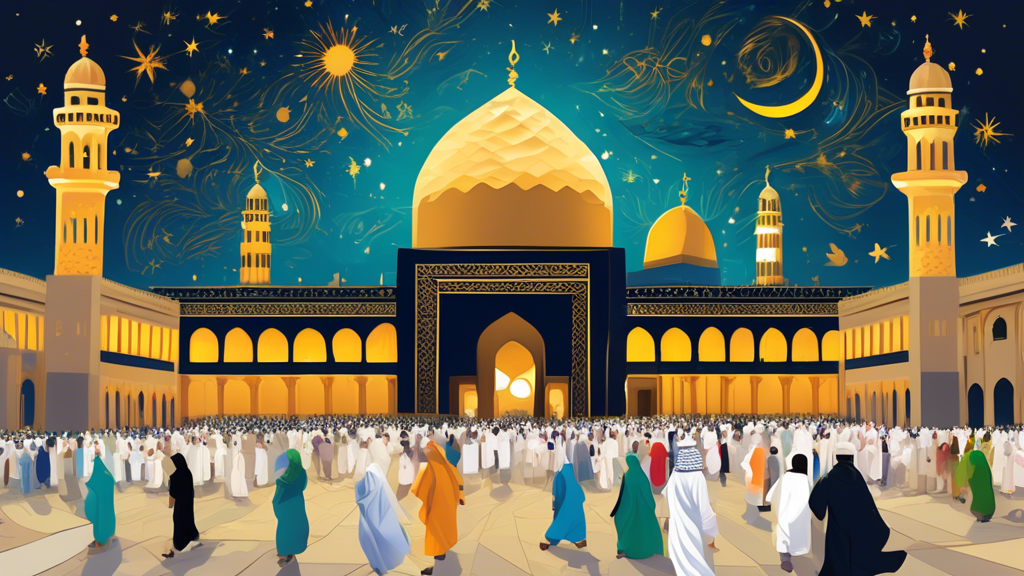Hajj is a significant Islamic pilgrimage that takes place annually, attracting millions of Muslims from around the globe to Mecca, Saudi Arabia. It represents one of the Five Pillars of Islam and is a spiritual journey that every adult Muslim is required to undertake at least once in their lifetime if they have the physical and financial ability to do so. The dates of Hajj are determined by the Islamic lunar calendar, specifically falling in the last month, Dhu al-Hijjah. Here is a detailed schedule and information about the key dates for Hajj 2024.
1. Arrival in Mecca
Before the official start of Hajj, pilgrims are expected to arrive in Mecca. The pilgrimage begins in the lunar month of Dhu al-Hijjah. Pilgrims should plan to arrive at least a week before the 8th of Dhu al-Hijjah to prepare for the days of Hajj. This preparation includes performing the initial Umrah, a minor pilgrimage that involves Tawaf (circumambulating the Kaaba), and Sa’i (walking between the hills of Safa and Marwah).
2. Day of Tarwiyah (8th Dhu al-Hijjah)
The 8th of Dhu al-Hijjah marks the start of Hajj and is known as the Day of Tarwiyah. On this day, pilgrims make their intentions known to perform Hajj and enter a state of Ihram—the special state of spiritual purity where certain worldly activities are prohibited. Most pilgrims move from Mecca to the nearby valley of Mina, where they spend the night in tents and prepare themselves spiritually for the days ahead.
3. Day of Arafat (9th Dhu al-Hijjah)
Considered the most important day of Hajj, the 9th of Dhu al-Hijjah is known as the Day of Arafat. Pilgrims travel to the plain of Arafat, where they spend the afternoon. This day is marked by the pivotal event of standing (wuquf) near the Mount of Mercy from noon to sunset. Here, pilgrims pray for forgiveness and mercy in what is often considered a rehearsal for the Day of Judgment. The day ends with the setting of the sun, and pilgrims then move to Muzdalifah.
4. Muzdalifah
Upon reaching Muzdalifah, an open area between Arafat and Mina, pilgrims perform the combined Maghrib and Isha prayers. They also collect pebbles for the symbolic stoning of the devil, a ritual performed over the following days. Many pilgrims choose to spend the night under the open sky in Muzdalifah before returning to Mina.
5. Eid al-Adha (10th Dhu al-Hijjah)
The 10th of Dhu al-Hijjah coincides with the festival of Eid al-Adha, also known as the Feast of Sacrifice. On this day, the ritual stoning of the devil begins at the Jamaraat in Mina. Pilgrims throw seven stones at the largest pillar, representing their rejection of evil. This is also the day when the sacrificial slaughtering of an animal is performed, symbolizing Prophet Ibrahim’s devotion and readiness to sacrifice his son as an act of obedience to God.
6. Tawaf al-Ifadah
After performing the stoning and the sacrifice, pilgrims return to Mecca to perform Tawaf al-Ifadah, which involves circling the Kaaba seven times. This act represents a pilgrim’s gratitude for the completion of Hajj. Following this, the pilgrims again perform the Sa’i.
7. Last Days in Mina
After returning from Mecca to Mina, pilgrims spend the 11th and 12th of Dhu al-Hijjah continuing the stoning ritual at all three pillars. It is a time for prayer and reflection on the lessons gleaned from the profound experiences of Hajj.
8. Final Circumambulation (Tawaf al-Wada)
Pilgrims perform the final circumambulation, known as Tawaf al-Wada, as a farewell to the Kaaba. It marks the conclusion of the Hajj, and after performing this last rite, pilgrims prepare to leave Mecca.
Hajj 2024 promises to be a powerful spiritual journey for Muslims worldwide. With careful planning and preparation, pilgrims can fulfill their religious obligations and profoundly internalize the lessons of faith, sacrifice, and submission to the divine will as demonstrated by Prophet Ibrahim and continued by millions today.
